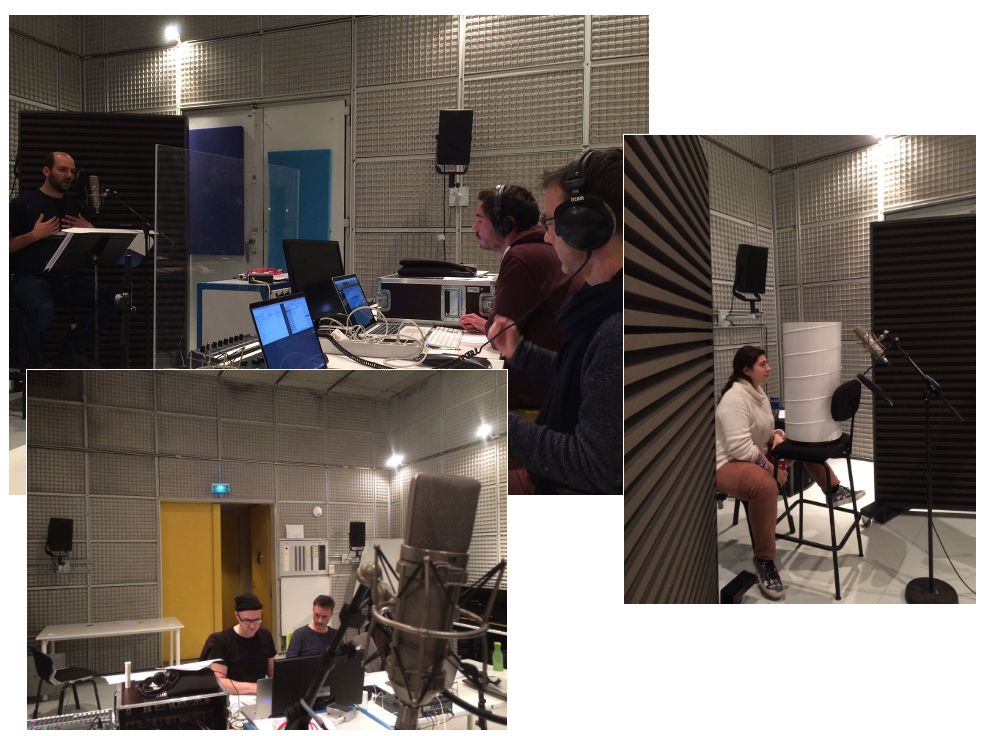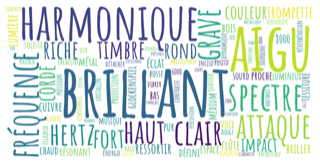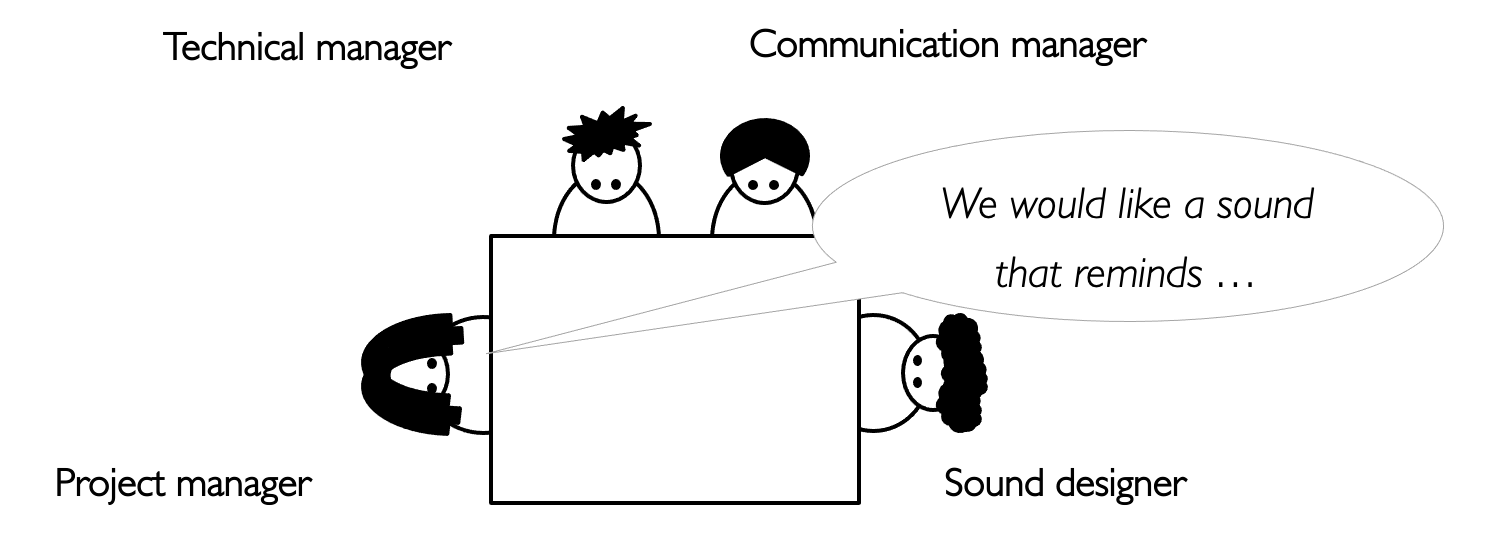Lexicon words4sounds.speak
List of words frequently used to describe the perceived characteristics of a sound
For an access to words4sounds.speak for the for SpeaK for Max >> HERE
Introduction
The lexicon words4sounds.speak was developed to acquire a vocabulary to communicate on the perceived characteristics of a sound, and to foster the perception of these characteristics by listening to sound examples.
Each word is presented by a definition, in French and in English, which makes it possible to establish a correspondence between the two languages.
The list of words and the definitions are based on an analysis of more than 50 scientific articles, and on interviews with sound professionals. This work is part of the PhD thesis by Maxime Carron.
The sound examples were created, recorded, and mastered under the direction of composer Roque Rivas, except the environmental sounds which were proposed and recorded by François Hamon as part of his internship at DNSEP Design Sonore, Esad- TALM. They were created to highlight the sound features related to the words for different categories of sounds. Ircam is the owner of all the sounds ©Ircam_2021.
The lexicon words4sounds.speak is available for plateforms Speak for Max and Speak for Web.
The lexicon words4sounds.speak is in itself a major result of an academic research displayed by the SpeaK platform introducing the list of words by definitions and several sound examples created specifically to reveal the sound characteristics associated with the words. It allows for example to understand what we hear when speaking about a "warm" sound by comparing examples produced by voices, musical instruments, or environmental sounds.
The lexicon words4sounds.speak was developed within the Sound Design and Perception group (Ircam STMS Lab) under the supervision of Patrick Susini in collaboration with Victor Rosi, Romain Barthelemy, Olivier Houix and Nicolas Misdariis.
-
Access to words4sounds.speak on SpeaK for Max >> HERE
-
Access to words4sounds.speak on SpeaK for Web >> HERE
 Voice recording sessions at Ircam for the lexicon words4sounds.speak
Voice recording sessions at Ircam for the lexicon words4sounds.speak
Organization of the lexicon
Each word of words4sounds.speak is illustrated by a definition and sound examples.
The words in the lexicon are grouped into three typologies:
- words related to
timbresuch as : Dull/Bright, Smooth/Rough, Warm, Round ... - words related to
general qualitiessuch as : Low/High, Soft/Loud, Tonal/Noisy ... - words related to
temporal morphologiessuch as : Fast/Slow Attack, Fast/Slow Release, ...
Most of the words are grouped by pairs to define a clear opposition such as Dull/Bright. In that case Speak propose an example for Dull and an example for Bright presented together. Few words such as Warm are presented alone; it means we don't know yet how the opposite sounds like.
The sound examples cover five categories of sounds: musical sounds, voice sounds, environmental sounds, elementary sounds, complex sounds.
Example : Dull(Mat)/Bright(Brillant)

The word Bright (brillant) is often used to describe a timbre characteristic of different sounds; the opposite word used is dull (mat). The words dull and bright refer to the amount of high-frequency energy perceived within a sound. A dull sound has a low amount of high-frequency components. The term muffled is also used. A bright sound contains a substantial amount of high-frequency components. The term sharp is also used.
Good musical examples for bright are the glockenspiel and the trumpet.
Applications
This lexicon can be used for ear training or for improving communication in a creation process.
Ear training
Several ear training tools exist on the market (TonedEar, Master Ears, Izotope). These tools generally focus on technical effects on sounds, such as filtering, compression, modulation, or on musical notions, such as pitch, interval, melodic contour.
The lexicon words4sounds.speak can be used to train for listening and describing perceived sound characteristics with students in music classes, futur sound engineers or sound designers. It could also be used between sound practitioners to fix the meaning of words during work sessions.
The ear training sessions with SpeaK could be organized in several steps in order to reach a common understanding. For example, in a first step, a lexicon inventory is presented in a collective listening session, then in an individual listening session, to finally concluded the first step by a collective debriefing in order to clarify ambiguities. Then, the second step will consist in an valuation test using for example a gamification strategy, in which scores are displayed after each trial during the test for a direct feedback on the performance to stimulate interest in order to improve results of the participants. The level of difficulty of the tests can be increased during the session or according to the expertise of the participants.
The Sound Perception and Design group is currently working on the development of suitable tests to assess the comprehension of the lexicon, based on the work by Paul Guionie during his internship for the DNSEP Design Sonore, Esad- TALM.
Sound design
The first briefs in a sound design project are crucial to elaborate recommandations for the sound designer. However, in the first briefs which bring together different non-expert sound practitioners ranging from the project manager to the communication manager, the major difficulty encountered is to specify the request with words related to sound features.

The lexicon words4sounds.speak has been tested and used in sound design projects with industrial or institutional partners by the Sound Perception and Design group (Carron et al., 2015; Misdariis et al., 2019).
Positive points were revealed for using the lexicon:
- It is helpful to foster the contact with the sound designer.
- It is helpful to involve all the participants in collective co-design sessions.
- It makes it possible to develop sound specifications from a unique and shared vocabulary.